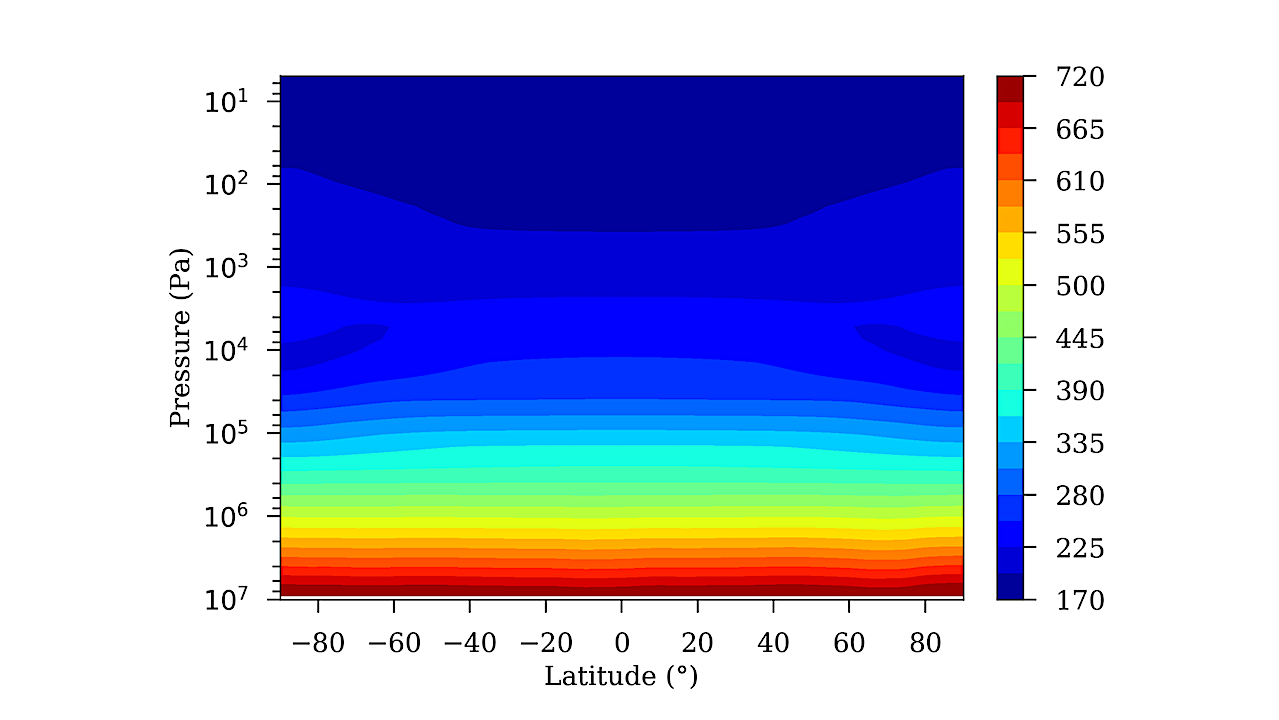Latitudinal Variation of Clouds’ Structure Responsible for Venus’ Cold Collar

Global Climate Models (GCM) are very useful tools to study theoretically the general dynamics and specific phenomena in planetary atmospheres.
In the case of Venus, several GCMs succeeded in reproducing the atmosphere’s superrotation and the global temperature field. However, the highly variable polar temperature and the permanent cold collar have not been reproduced satisfactorily yet. Here we improve the radiative transfer scheme of the Institut Pierre Simon Laplace Venus GCM in order to numerically simulate the polar thermal features in Venus atmosphere.
The main difference with the previous model is that we now take into account the latitudinal variation of the cloud structure. Both solar heating rates and infrared cooling rates have been modified to consider the cloud top’s altitude decrease toward the poles and the variation in latitude of the different particle modes’ abundances.
A new structure that closely resembles the observed cold collar appears in the average temperature field at 2×104−4×103~Pa (∼62−66~km) altitude range and 60∘−90∘ latitude band. It is not isolated from the pole as in the observation-based maps, but the obtained temperature values (220~K) are in good agreement with observed values. Temperature polar maps across this region show an inner warm region where the polar vortex is observed, but the obtained 230~K average value is colder than the observed mean value and the simulated horizontal structure does not show the fine-scale features present within the vortex.
Our study shows that the cloud structure is essential in the cold collar formation. Although our analysis focuses on the improvement of the radiative forcing and the variations it causes in the thermal structure, polar dynamics is definitely affected by this modified environment and a noteworthy upwelling motion is found in the cold collar area.
I. Garate-Lopez, Sébastien Lebonnois
Subjects: Earth and Planetary Astrophysics (astro-ph.EP)
Cite as: arXiv:2402.04057 [astro-ph.EP] (or arXiv:2402.04057v1 [astro-ph.EP] for this version)
Journal reference: Icarus, vol. 314, 1-11 (2018)
Related DOI:
https://doi.org/10.1016/j.icarus.2018.05.011
Focus to learn more
Submission history
From: Itziar Garate-Lopez
[v1] Tue, 6 Feb 2024 15:02:54 UTC (3,994 KB)
https://arxiv.org/abs/2402.04057
Astrobiology








